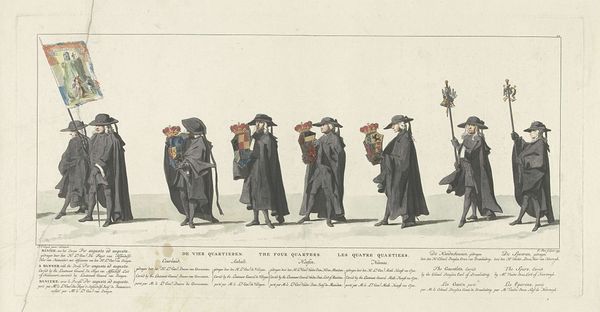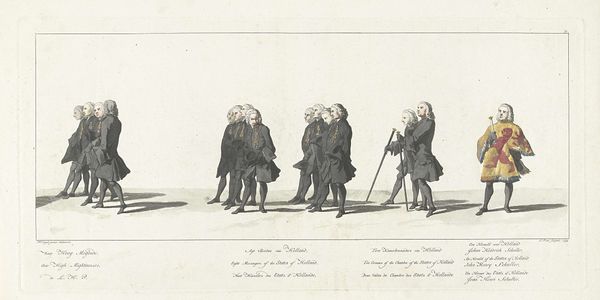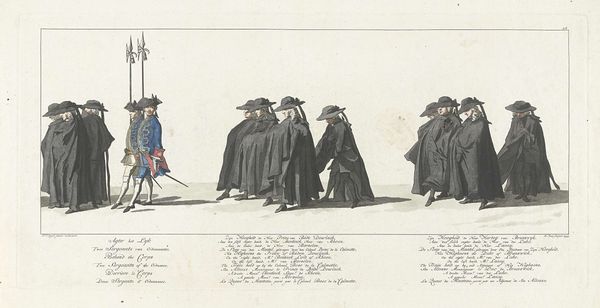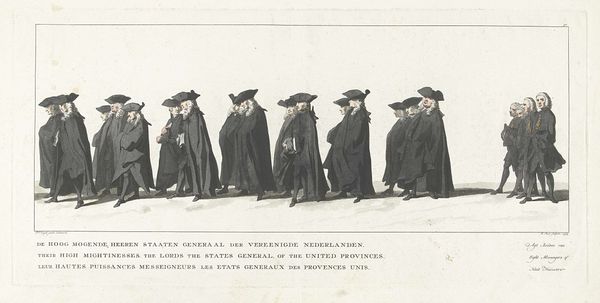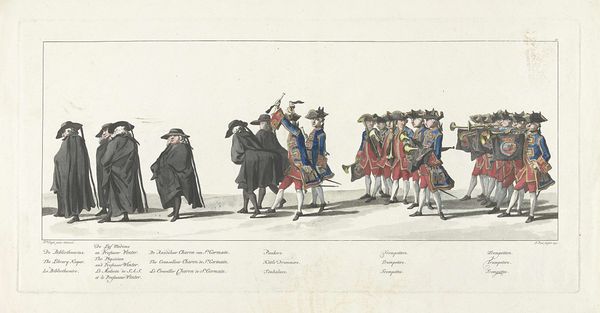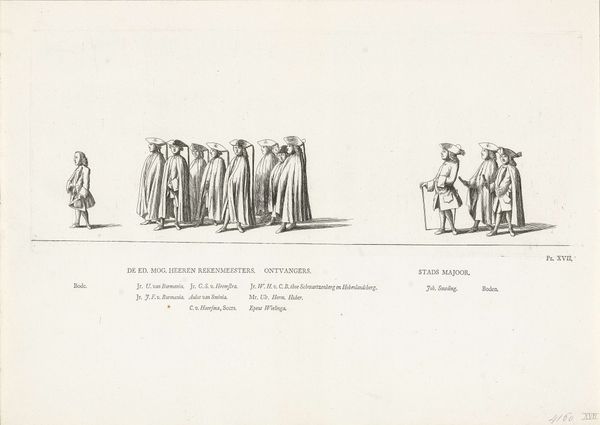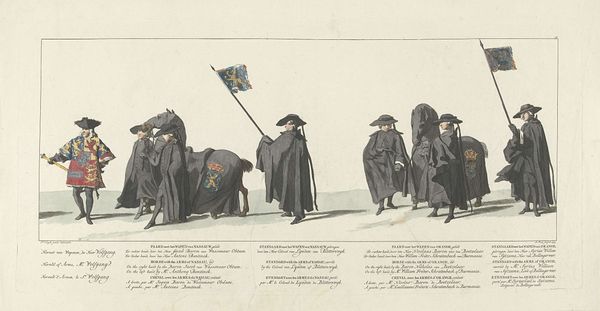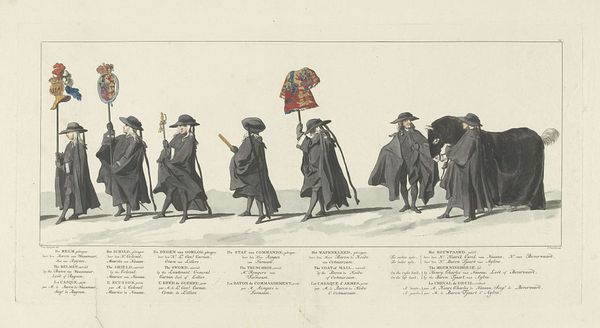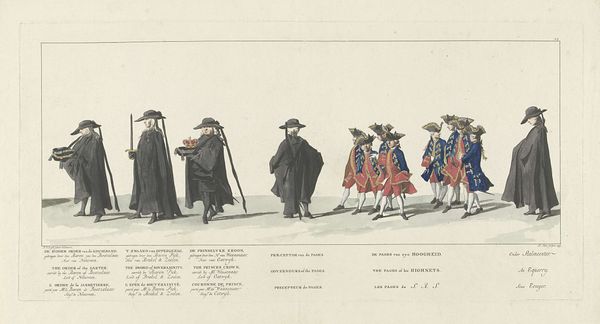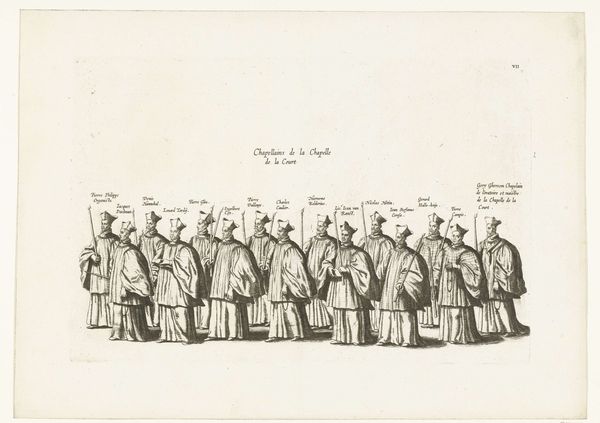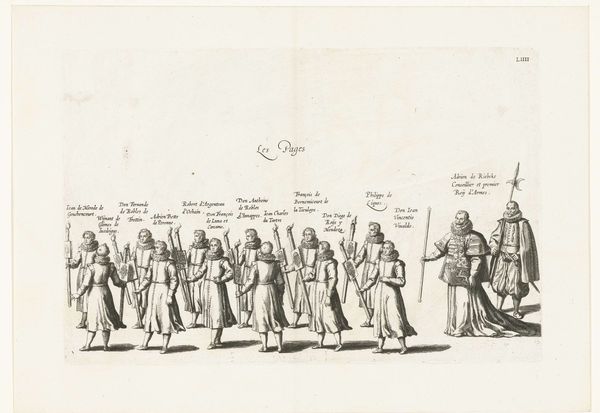
drawing, etching, pen, engraving
#
portrait
#
drawing
#
baroque
#
etching
#
historical fashion
#
pen
#
genre-painting
#
history-painting
#
academic-art
#
engraving
Dimensions: height 270 mm, width 560 mm
Copyright: Rijks Museum: Open Domain
Curator: This somber procession seems to float on the white page. What catches your eye first? Editor: The repetitive silhouettes, certainly. That stark contrast between the figures and the background emphasizes their formality. It's all verticals and a restricted palette; what historical moment does this commemorate? Curator: This is plate 33 from Jan Punt's "Lijkstatie van Willem IV, 1752," dating to around 1754. The work, housed here at the Rijksmuseum, is a pen and etching print recording the funeral procession of Prince William IV. Editor: The composition has an almost processional feel itself, doesn't it? Linear, measured... Each grouping seems slightly offset, creating a rhythmic, almost musical cadence across the page. There is great emphasis on line quality in this engraving, so this procession also seems extremely orderly. Curator: Indeed. The print served a crucial public function, disseminating imagery and solidifying the narrative of the Stadtholder's death and the associated rituals of power and mourning. Note how Punt has diligently labelled the social station of each of these figures. These weren't just men grieving; they were functionaries embodying civic governance. Editor: And fashion… Look at the severe uniformity of their garments. Each wig, cloak and tricorn hat seems precisely rendered according to sumptuary law and societal roles. Curator: Exactly, fashion of this kind dictated one's socio-political standing! Consider too, that the production of these prints coincided with the rise of a more assertive middle class in the Dutch Republic. Mass-produced imagery such as this arguably contributed to shaping and disseminating a sense of national identity. Editor: Fascinating! It's an artwork documenting ritual, which itself has become a ritual, as its form imitates this. Thank you for lending historical insight to the discussion. Curator: And thank you, for emphasizing how much meaning can be extracted from something as simple as line and form.
Comments
No comments
Be the first to comment and join the conversation on the ultimate creative platform.
